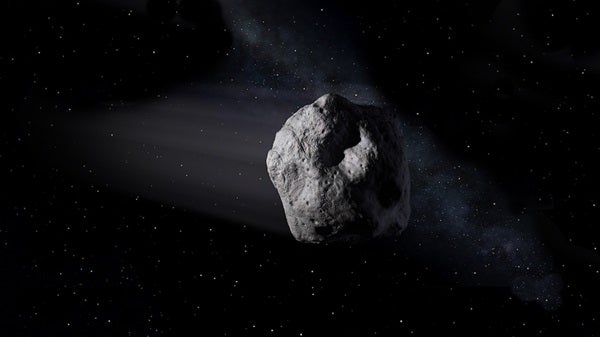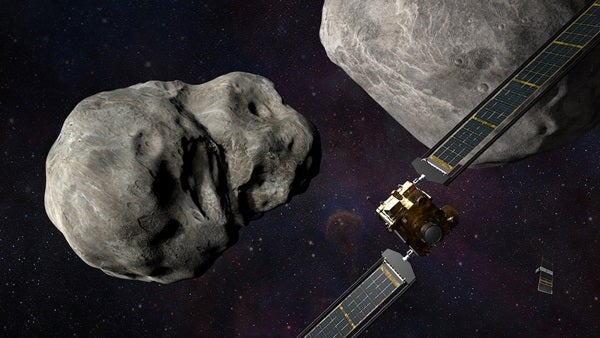As if 2021 wasn’t chaotic enough, an asteroid is currently careening its way into our neighborhood this week. But despite what doomsdayers and internet memes suggest, we don’t have much to worry about concerning 4660 Nereus.
NASA classifies asteroids or comets that come within 1.3 astronomical units (AU; where 1 AU is the average Earth-Sun distance) of our planet as near-Earth objects (NEOs). A potentially hazardous object (PHO) is one that gets even closer at 0.5 AU, or about 47 million miles (75 million kilometers).
On a cosmic scale, that isn’t very far, which is why NASA keeps a close eye on both NEOs and PHOs. But in terms of being a tangible risk to our planet, these objects are still usually far enough away to not pose a threat. Keep in mind that the Moon resides roughly 240,000 miles (385,000 km) from Earth, or roughly 1/200th the distance to the most far-flung PHOs.
As for 4660 Nereus, this space rock is on a path that will bring it within 2.4 million miles (3.9 million km) of Earth, or about 10 times farther out than the Moon. Even at its next closest approach — expected in 2060 — the asteroid will only get within about three times the Earth-Moon distance.
Practicing for the worst-case scenario
Nevertheless, NASA and other space agencies aren’t eager to wait for a truly dangerous, locked-on asteroid or comet before they develop a contingency plan.
That’s why, on Nov. 24, NASA launched its Double Asteroid Redirection Test (DART) — the first full-scale mission meant to test technology for redirecting an incoming space rock. As part of the mission, DART will strike a moonlet, called Dimorphos, that orbits Didymos, which is an asteroid with an orbital distance ranging between 1 AU and 2.27 AU. DART will strike Dimorphos when the pair is within 6.8 million miles (11 million km) of Earth with a speed of roughly 4 miles per second (6 kilometers per second).
“DART is turning science fiction into science fact and is a testament to NASA’s proactivity and innovation for the benefit of all,” said NASA Administrator Bill Nelson in a press release. “In addition to all the ways NASA studies our universe and our home planet, we’re also working to protect that home, and this test will help prove out one viable way to protect our planet from a hazardous asteroid should one ever be discovered that is headed toward Earth.”
DART is expected to reach the pair of asteroids sometime between Sept. 26 and Oct. 1, 2022. Afterwards, scientists will study how the kinematic impact changes the system. They suspect, based on calculations, that the head on collision will simply shorten Dimorphos’ orbit around Didymos by several minutes, enough for researchers to measure it from ground-based telescopes.
“We have not yet found any significant asteroid impact threat to Earth, but we continue to search for that sizable population we know is still to be found. Our goal is to find any possible impact, years to decades in advance, so it can be deflected with a capability like DART,” said Lindley Johnson, planetary defense officer at NASA Headquarters.











